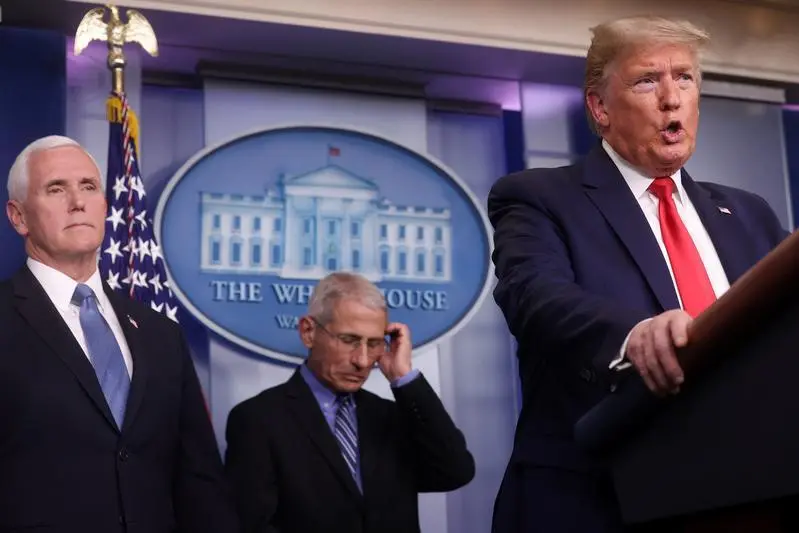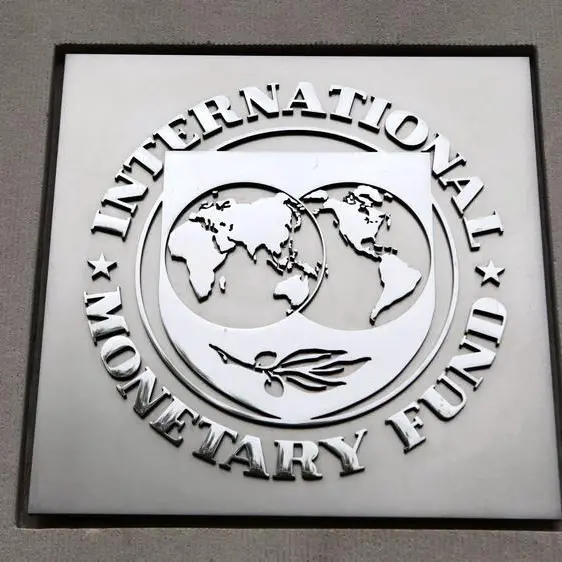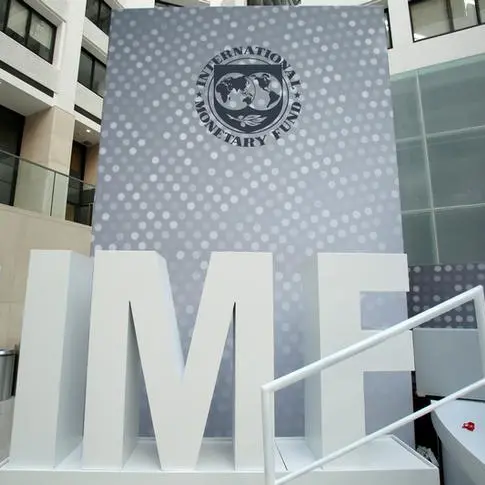PHOTO
SAN FRANCISCO - In a health emergency, U.S. President Donald Trump doesn’t have the final word. With economic damage mounting due to the coronavirus, he may bring an end to federal social-distancing restrictions. But lifting curbs is mostly not in his power.
More than 100 million Americans are under orders to stay at home and many non-essential businesses are closed. New weekly jobless claims may have hit nearly 2.3 million last week, according to Goldman Sachs, and markets have erased their gains since Trump became president in 2017.
That has made him nervous as he looks to November's elections. He tweeted in capital letters on Tuesday that he doesn't want the cure to be worse than the problem. He is considering removing guidelines to avoid large gatherings and other measures next Monday, against the advice of medical experts.
There is a genuine dilemma. The virus will kill people, but an economic depression partly triggered by lockdown conditions could also bring huge social harm, including deaths. But experience elsewhere and assessments by experts suggest it's too soon: The worst of the outbreak has yet to hit.
Part of the rationale for the restrictions is to avoid overwhelming the healthcare system. That’s why local leaders like California Governor Gavin Newsom, the first state official to order lockdown measures, will be guided by their own regional dynamics. Cases in places like New York, where people are also supposed to stay home, are expected to multiply.
An Imperial College London study found that even if the spread of the virus is slowed, there might still be 1.1 million deaths in the United States, and there are only about 93,000 intensive-care hospital beds, according to a recent Columbia University study. Hong Kong is seeing a resurgence in cases after containing it earlier this year.
Companies from Wall Street banks to Twitter TWTR.N started telling employees to work from home before Trump’s guidelines came in, and they may maintain that arrangement regardless. For businesses that can, it's the safe option.
Easing social curbs must happen eventually. A good preliminary step might be for Trump to address inadequate supplies of testing kits and protective gear for healthcare workers. Providing assistance to workers and companies in financial pain is also necessary. The trade-offs in a pandemic are brutal, but they could become harsher if the outbreak is allowed to get worse.
On Twitter https://twitter.com/GinaChon
CONTEXT NEWS
- U.S. President Donald Trump is considering ending so-called social-distancing guidelines and other restrictions on March 30, two weeks after they were announced as part of the effort to slow the spread of the viral Covid-19 disease in the United States. Trump said on March 23 that America would soon be open for business again and that the government couldn’t let the “cure be worse than the problem itself.”
- Health experts, including Anthony Fauci, director of the National Institute of Allergy and Infectious Diseases, have said they believe it will take well past March 30 before normal life can safely resume. States including Michigan and New York have ordered residents to stay at home and for non-essential businesses to be closed. They cover about 100 million people.
(Editing by Richard Beales and Leigh Anderson) ((gina.chon@thomsonreuters.com; Reuters Messaging: gina.chon.thomsonreuters.com@reuters.net))












